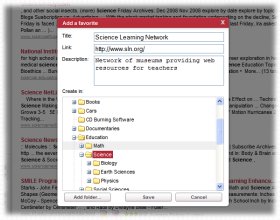|
Education
Web
Viewing 1-2 of 2 total results
HIGH SCHOOL MATHEMATICS CONTENT EXPECTATIONS page 8 of 19 11/07 MICHIGAN DEPARTMENT OF EDUCATION recOMMenDeD: *L1.2.5 Read and interpret representations from various technological sources, such as contour or isobar diagrams. *L2.1.7 Understand the mathematical bases for the diffe...
1
0
HIGH SCHOOL MATHEMATICS CONTENT EXPECTATIONS page 8 of 19 11/07 MICHIGAN DEPARTMENT OF EDUCATION recOMMenDeD: *L1.2.5 Read and interpret representations from various technological sources, such as contour or isobar diagrams. *L2.1.7 Understand the mathematical bases for the differences among voting procedures. *L2.2.4 Compute sums of infinite geometric sequences.
10
0
http://www.michigan.gov/documents/Math11-14-open1_142202_7.pdf#page=10
www.michigan.gov/documents/Math11-14-open1_142202_7.pdf#page=10
HIGH SCHOOL MATHEMATICS CONTENT EXPECTATIONS page 8 of 19 11/07 MICHIGAN DEPARTMENT OF EDUCATION recOMMenDeD: *L1.2.5 Read and interpret representations from various technological sources, such as <span class="highlight">contour</span> or isobar diagrams. *L2.1.7 Understand the mathematical bases <span class="highlight">for</span> the differences among voting procedures. *L2.2.4 Compute sums of infinite geometric sequences.
numbers to 110; compare using phrases such as “same as”, “more than”, “greater than”, “fewer than”; use = symbol. Arrange small sets of numbers in increasing or decreasing order, e.g., write the following from smallest to largest: 21, 16, 35, 8. N.ME....
1
0
numbers to 110; compare using phrases such as “same as”, “more than”, “greater than”, “fewer than”; use = symbol. Arrange small sets of numbers in increasing or decreasing order, e.g., write the following from smallest to largest: 21, 16, 35, 8. N.ME.01.04 Identify one more than, one less than, 10 more than, and 10 less than for any number up to 100. N.ME.01.05 Understand that a number to the right of another number on the number line is bigger and that a number to the left is smaller. N.ME.01.06 Count
10
0
http://www.michigan.gov/documents/MathGLCE_140486_7.pdf#page=10
www.michigan.gov/documents/MathGLCE_140486_7.pdf#page=10
numbers to 110; compare using phrases such as “same as”, “more than”, “greater than”, “fewer than”; use = symbol. Arrange small sets of numbers in increasing or decreasing order, e.g., write the following from smallest to largest: 21, 16, 35, 8. N.ME.01.04 Identify one more than, one less than, 10 more than, and 10 less than <span class="highlight">for</span> any number up to 100. N.ME.01.05 Understand that a number to the right of another number on the number <span class="highlight">line</span> is bigger and that a number to the left is smaller. N.ME.01.06 Count
24
0
http://www.michigan.gov/documents/MathGLCE_140486_7.pdf#page=24
www.michigan.gov/documents/MathGLCE_140486_7.pdf#page=24
Multiply fluently any whole number by a one-digit number and a three-digit number by a two-digit number; <span class="highlight">for</span> a two-digit by one-digit multiplication use distributive property to develop meaning <span class="highlight">for</span> the <span class="highlight">algorithm</span>. N.FL.04.11 Divide numbers up to four-digits by one-digit numbers and by 10. N.FL.04.12 Find the value of the unknowns in equations such as a ÷ 10 = 25; 125 ÷ b = 25.* N.MR.04.13 Use the relationship between multiplication and division to simplify computations and check results. N.MR.04.14
|
